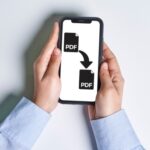If you have the time, printing large quantities at once can reduce per-unit costs. It also provides you with the opportunity to make sure your booklet is error-free before sending it off for printing.
Custom sizes can increase prices, so stick with standard sizes if possible. They are also less bulky and more accessible for readers to hold and flip through.
Keep It Simple
Custom booklet printing is a great way to communicate important information about your business in an easy-to-read format that your customers will keep and reference. Using a few simple tweaks, however, you can make your booklets even more effective and provide an optimal experience for those who read them.
First, keep in mind that printing presses aren’t able to print right up to the edge of each page. As such, it’s essential to have a 1/8″ (0.125 in.) bleed around your entire booklet design so the printer can correctly cut the pages to their finished sizes without trimming any critical text or images.
The next thing to remember is the number of booklets you want. Sticking with standard sizes can save you money, as printing centers arrange jobs on press sheets based on size and page count.
Additionally, consider printing in black instead of full color to minimize cost. You’ll find that the price difference is minimal and may be cheaper. Using color will help ensure your booklets stand out and create a lasting impression on your audience.
Think About the Paper
Whether you’re creating a booklet to showcase your products or want to engage with your audience, the content you choose is critical. The text should be compelling and easy to read, and the photos should have high resolution so that photo details are crisp.
The paper is also crucial, as it will determine how thick and durable the booklet is. For example, uncoated paper offers a more natural and tactile experience. It is often perceived as more sincere and trustworthy, which makes it an excellent option for non-profit organizations and businesses that want to establish a grounded and approachable brand image.
Additionally, the thickness of your booklet will depend on the binding type you choose. For example, staple binding is more cost-effective than spiral binding but offers less durability or protection. You may also select a wire-O binding instead, which will provide more stability and is ideal for thicker booklets. This method involves closed wire loops going through each page and cover.
Make Sure It’s High-Quality
Booklets are a great way to convey information in one concise and visually appealing package. They are often used to create high-quality product catalogs and include everything from images to charts, graphs, and other vital data. They can also highlight company history and other key points that will help attract and engage readers.
In addition to high-quality imagery, effective booklet printing often utilizes eye-catching colors to capture the audience’s attention and make them want to keep turning the pages. Choosing the right color palette can be very important, but it should always be balanced with your booklet’s overall look and feel.
Another thing to consider is the type of paper you use. Some printers use a thick cardstock cover for their booklets to give them a more substantial and luxurious feel. However, if you’re on a tight budget, using a heavier stock for the inner pages can increase the price significantly. To avoid this, choose a standardized print size to save money.
Don’t Forget About Creep
Booklets are a great way to impress and educate your audience while providing them with a branded message they can take and share with others. Unlike flyers, booklets have more room for content, ensuring that your marketing materials leave an impact on every page.
When creating a saddle-stitched booklet, it’s important to remember that the pages may “creep” when they’re printed and folded together due to the thickness of the paper stock. This can create problems using design elements like tabs, borders, or page numbers close to the booklet’s edges.
To avoid these issues, prepare your art files with bleeds by extending the images and color blocks from the trim edge by about 1/8th of an inch. This will ensure that your visuals stay on the page without the white space that would otherwise be cut off during trimming. It’s also a good idea to use a smaller trim size to reduce the amount of creep. This is especially true if you’re printing a higher-page count booklet.
Make Sure You’re Getting the Right Size
Booklets are an excellent way to provide detailed information about your products and services, but it’s essential to ensure you stay moderate with the number of pages. Using too many pages can lead to an overly long booklet that is difficult to read and carry, which can cause the reader to lose interest in your content.
Additionally, selecting the wrong size can also be costly. Standard sizes like 8.5″ x 11″ and 5.5″ x 8.5″ offer plenty of space for text and images while providing a professional look. These sizes are ideal for instruction manuals, reports, catalogs, and marketing strategies.
Another factor to consider when choosing a size is your audience. While printing costs and brand image are undoubtedly significant, the use of a specific size should be driven by the needs of your audience. Using a more substantial size allows for greater flexibility with layouts and will enable you to highlight more of your products or services. This can help you increase sales and create a positive image of your company in the eyes of potential customers.




